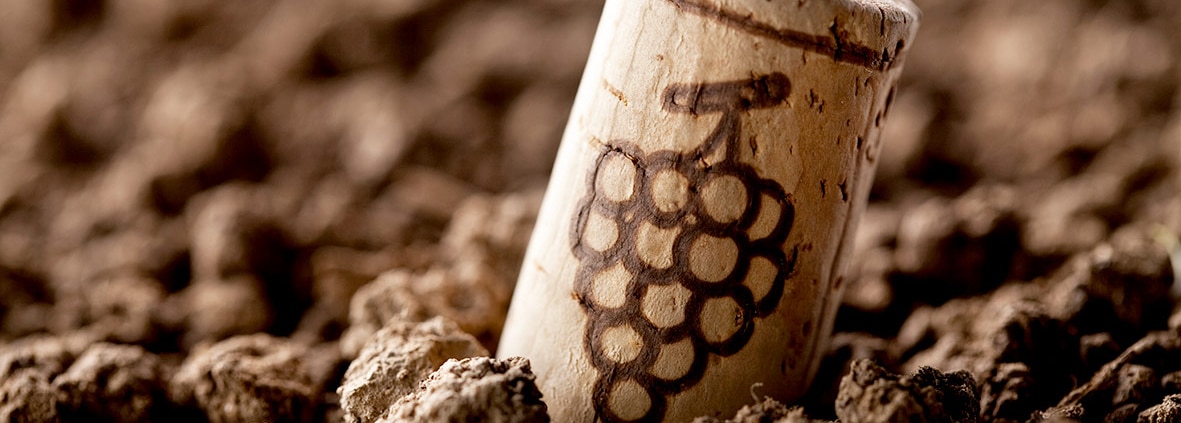Cork
Champagne is basically equipped only with the best natural corks. The cork comes in principle from Spain, Portugal and the western Mediterranean. From the point of view of botanists, cork represents the bark of the cork oak (Quercus suber), which can be up to 350 years old
For the first time the oaks are peeled after about 25 years. However, this cork is not suitable for the production of bottle corks. This is because it contains an impure smell and taste. Eight to 15 years later, the cork oak produces suitable cork, which is then stored for about 9 months. Visually, the quality of corks can be measured by the number and size of their pores: The larger the pores, the poorer the quality.
ImageA champagne cork is cylindrical in shape in origin like a normal wine cork, but about three centimeters in diameter. The cork fabric is densely packed with cells, which are water repellent, filled with air and elastic. A four-jaw cork stopper squeezes the cork to about two centimeters. The cork is then mechanically inserted into the neck of the bottle to a depth of about two centimeters. The subsequent expansion ensures particularly water-repellent density in the neck of the bottle. These unique qualities of the cork are ideal for sealing the champagne, as it is not only about moisture, but also about protection against the escape of the precious carbonic acid. In addition, the champagne cork receives a small 'metal cap' (plaque). This protects the cork from being cut by the wire. The additionally securing, traditional wire basket is then attached.
Often the cork is made the scapegoat for other wine faults, which have happened due to the wine itself or its faulty storage. In fact, however, the cork can sometimes be the culprit that causes corkton. This is due, among other things, to the fact that fungi sneak into the tissue of the cork, which release metabolic products and produce the chemical precursor of the corktone-causing agent in the wine (see also 'Enemies of the cork' below).
On the cork of a true champagne must necessarily be written 'Champagne'. For vintage champagne must also be indicated a year.
The shape of the cork of an opened bottle also reveals how long it was in the bottle:
Image* If it goes wide with the foot, it has been in the bottle for a short time (possibly less than a year). A cork of this type is called a juponne.
* If its foot remains narrow, then the champagne is older and thus was corked a long time ago. A cork of this type is called Cheville.
ImageChampagne corks are generally fitted with two additional natural cork discs at the foot (this end piece is called a 'miroir'). These discs serve as a complementary liquid and carbonic acid barrier.
The world record for the free flight of a champagne cork is 54.18 m (Woodbury Vineyards in the US state of New York).
Enemies of the cork
ImageFor sterilizing the corks, chlorine and SO² are used by manufacturers. During the bleaching process, chemical reactions may occur with microorganisms and the chlorine, which can cause (unpleasant) aromatic substances. The substance TCA (trichloroanisole) is considered to be mainly responsible for the notorious cork taste. Over time, a wine absorbs these (undesirable) flavor attributes through contact with affected corks (cork taint). Modern companies in the cork trade now use, among other things, GC/MS testing systems (gas chromatograph with mass spectrometer), with which the smallest amounts of TCA residues in corks can be detected. Large and small champagne houses exercise the greatest care in choosing new corks anyway. For example, the champagne house Mumm subjects every new delivery of corks to a costly test in which 200 bottles are first sealed with these new corks and then stored for 6 weeks. These champagnes are then opened and thoroughly tested by the house oenologists. If there is even the suspicion of a 'cork taint' in more than three bottles of the 200, the entire delivery of corks is rejected.
Very dangerous for corks is also mold, which can be introduced by insufficient sterilization, improper transport and/or also unfavorable storage of the corks at the winegrower. In addition, the mold can later also infest the private inventory of wine lovers who either do not observe important rules for storage ('no storage next to fruit', for example) or are also unfortunately forced for other reasons to rather unfavorable storage of their wines. Fortunately, a distant relative of wine, the humble vinegar, is again considered an enemy of mold.
Another dangerous enemy is the cork moth (Nemapogon cloacellus). This small moth (about 7.5 mm long) appreciates the cork as an ideal breeding place for its eggs. The resulting caterpillars (cork worm) feed on the cork, which as a result often loses its tightness (the wine is thus unfortunately generally ruined). In addition to looking at the cork itself, small 'cork crumbs' around the neck of the bottle or at the bottom are also an indication that there may be a problem in this regard. Fortunately, champagnes offer at least some defense against these unpleasant things: the tight wire basket, the capsule, as well as the nice tinfoil cap, make access much more difficult for the moth. The author also thinks that spiders should be tolerated in the camp under certain circumstances, as they may very well take a liking to this moth as well.
The cork for good luck
cork-bottom.jpgYou could introduce an old tradition to your guests while serving by carefully adding an incision to the bottom of the cork, inserting any coin there and presenting this combination to someone. As long as the coin and the cork remain united, according to legend, good luck will remain with the recipient.
It is rumored that when the champagne cork is presented to a lady, she only has to spend three nights with the cork under her pillow before she will dream of that man she will eventually marry!

